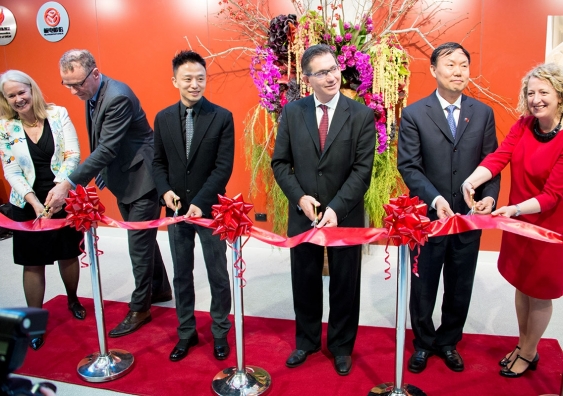UNSW’s first Torch Precinct deal wins top national award
A next-generation power cable promising more efficient electricity grids has won a prestigious research commercialisation award.
A next-generation power cable promising more efficient electricity grids has won a prestigious research commercialisation award.

A next-generation power cable, which promises to cut electricity costs and enable more efficient grid transmission, has earned UNSW a prestigious research commercialisation award.
UNSW won the Best Commercial Deal at the third annual Knowledge Commercialisation Australasia (KCA) awards in Brisbane last night. The awards honour achievements in technology transfer and commercialisation by Australian and New Zealand universities, companies and startups.
UNSW took home the major prize for a deal that secured $20 million in capital investment from Chinese corporation Hangzhou Cable Co. Ltd. (HCCL). They have established a joint venture with UNSW called Zhejian Handian Graphene Tech, which aims to commercialise the new power cables.
This is the flagship collaboration of the new Torch Innovation Precinct at UNSW – an unprecedented partnership with the Chinese government and leading Chinese businesses, expected to deliver more than $100 million to the University over the next 5 years.
Professor Ian Jacobs, President and Vice-Chancellor of UNSW, said the award showed the Torch partnership in action: “This is not research that will end up in a drawer in the patent office. This is real world science at the cutting-edge.”
“Innovation at this level is complex team work that grows from strong partnerships and vibrant collaborations, and we’ve already established a formidable relationship with HCCL in Hangzhou.
“By accelerating our research efforts in Sydney and rapidly scaling them up through HCCL’s operations in China and then out to global markets, we anticipate we’ve established a model for many more innovative Australian-Chinese collaborations that will have global impact.”
The higher-efficiency, graphene-enhanced cables are developed by a UNSW research team led by materials scientist Professor Sean Li. They could help overcome persistent electricity leakages in conventional power grids, saving consumers money and preventing unnecessary greenhouse gas emissions from wasted power generation.
It is expected their commercialisation and application could save some 275 terawatt hours of power a year across China alone – more than Australia’s entire annual energy consumption.
As part of the deal with HCCL, the University will receive $10 million for research and development. This has already funded the construction of a new materials science lab at Kensington Campus, where researchers will develop a 10-metre prototype.

UNSW President and Vice-Chancellor Ian Jacobs (centre) with HCCL reps, opening the joint laboratory at UNSW.
The other $10 million will be used to scale-up the joint venture. This will enable the eventual manufacturing and commercialisation of the cables in China and internationally. Professor Jacobs is in Hangzhou this week to help open a joint lab near the HCCL headquarters. Under the deal, UNSW will remain a 20% partner.
The Torch initiative brings together world-class UNSW research teams and Chinese businesses and industries with the capital, capacity and market access needed to translate Australian research into high-impact new products, processes and services.
This is the first such partnership outside China. It is backed by leading Chinese companies and the Ministry of Science & Technology’s flagship ‘Torch’ high technology industry development program.
Since 1988, China has developed 150 Torch precincts nationwide, which now generate some 7% of GDP. Deloitte Access Economics has estimated the Torch precinct at UNSW could boost Australian GDP by $1.1 billion in its first decade alone.
UNSW has already secured $30 million from eight Chinese companies, supporting research into advanced materials, biotechnology, energy, and environmental engineering.